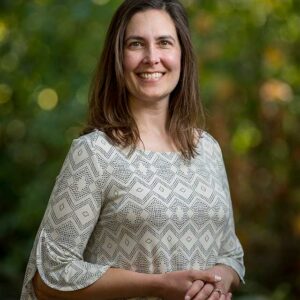California just made history, again. This time, in a very positive way. Governor Newsom’s Executive Order issued on October 7th enlists the state’s vast network of natural and working lands as nature-based solutions to climate change. California becomes the first state in the nation pledging to conserve 30 percent of land and coastal water by 2030. Right at a time when we are reeling from apocalyptic skies, hazardous air quality, and a historic number of acres still burning across the state, this announcement instills hope in the political leadership and unique partnerships required to get to work building our resilience to climate change.
Since August, the collective California consciousness has been questioning our path forward with wildfires that scientists predict will grow even larger and more frequent in the coming years. To solve a problem this complex certainly requires a multi-pronged approach—many of which are being written about on a daily basis. With this new executive order, State agencies must pursue innovative actions, strategies, and partnerships that will unlock the full climate benefits that nature can provide. Our state government has boldly placed its faith in the power of nature to deliver not just protection from wildfires or floods, but also the vast potential to reduce greenhouse gas emissions and avert catastrophic climate change through our very own incredible natural resources: our forests, rangelands, farms, wetlands, coasts, deserts and urban greenspaces.
Prioritizing nature-based solutions to combat climate change is acknowledging the resilience piece missing from the State’s other notable executive order to require zero-emissions vehicles by 2035. The natural environment around us can be resilient to wildfire and other climate impacts if we conserve and steward these open spaces, which in turn can also sequester carbon and reduce our greenhouse gas emissions. Landscapes thriving with native species from oaks to manzanitas can act as buffers to wildfire. As the Bay Area saw during the Kincade Fire in 2019, fires can be more easily contained due to significant “greenbelt areas” including grazing land, vineyards, and parks surrounding neighborhoods that lessened the wildfire impacts in Windsor, Geyserville, and North Healdsburg.
With these executive orders underway, now is the time for the State to collaborate with local and regional organizations doing the work of preserving natural spaces for their multiple benefits. Currently, almost 3.3 million acres of the Bay Area’s nine counties are protected open space from the tireless work of environmental nonprofits, advocates, and other partners over many years. Increasing the target of California’s conserved natural and working lands to 30 percent will require considerable collaboration across State agencies and with local jurisdictions. It also calls for heightened coordination with the federal government, which owns nearly 58 percent of California’s 33 million acres of forestlands, with the State owning 3 percent. Earlier this summer, a new joint state-federal initiative signaled that heightened coordination to improve forest stewardship to reduce wildfire risk, restore watersheds, and help the State meet its climate objectives.
The State needs to work with diverse stakeholders to identify new mechanisms and incentives that would not only facilitate but accelerate the identification, policy protections, and stewardship investment in natural and working lands, and urban greenspaces. Nonprofits and academic institutions stand ready to churn out the research and analysis to guide conservation policy decisions, and help agencies and organizations work together to better understand our “resilience hotspots” to prioritize the lands at greatest risk that can, in turn, provide the greatest benefit in nature-based solutions to build our resilience to climate change.
Knowing where those natural areas are that can provide maximum climate resilience benefits will help us prepare for overlapping climate disasters—and inform where the state should make its public investments. Policies like Urban Growth Boundaries that mark the limits beyond which urban development will not be allowed are instrumental and should be applied statewide for protecting the natural landscapes surrounding communities that can in turn protect us from wildfires, floods, and drought. More policy guidance, funding, and capacity for implementing innovative strategies are needed in order for local and regional governments across California to follow the State’s lead and, in collaboration with communities, implement equitable, climate-resilient land-use decisions centering nature-based solutions.
Being resilient means ensuring that communities and people can respond to, adapt, and recover from climate impacts like wildfire in order to thrive in the places they live, work, and play. Protecting and investing in our natural and working lands will in turn protect our communities and invest in our futures as we relearn to coexist with wildfire, adapt to years-long drought, and weather the next extreme rainfall. As local and regional governments across the Bay Area and the state are certainly grappling with added shocks and stresses of a global pandemic, growing unemployment, and social and racial unrest on top of the damaging impacts of a historic wildfire season, innovative pathways forward are paramount.
Living through this unimaginable year and overwhelmingly devastating wildfire season that is not yet over, we all are poised to come together in building our resilience. That will take heeding the power of nature, and acknowledging that in order to address our climate risks, nature can truly provide solutions in allowing us to continue to thrive if we let it.





